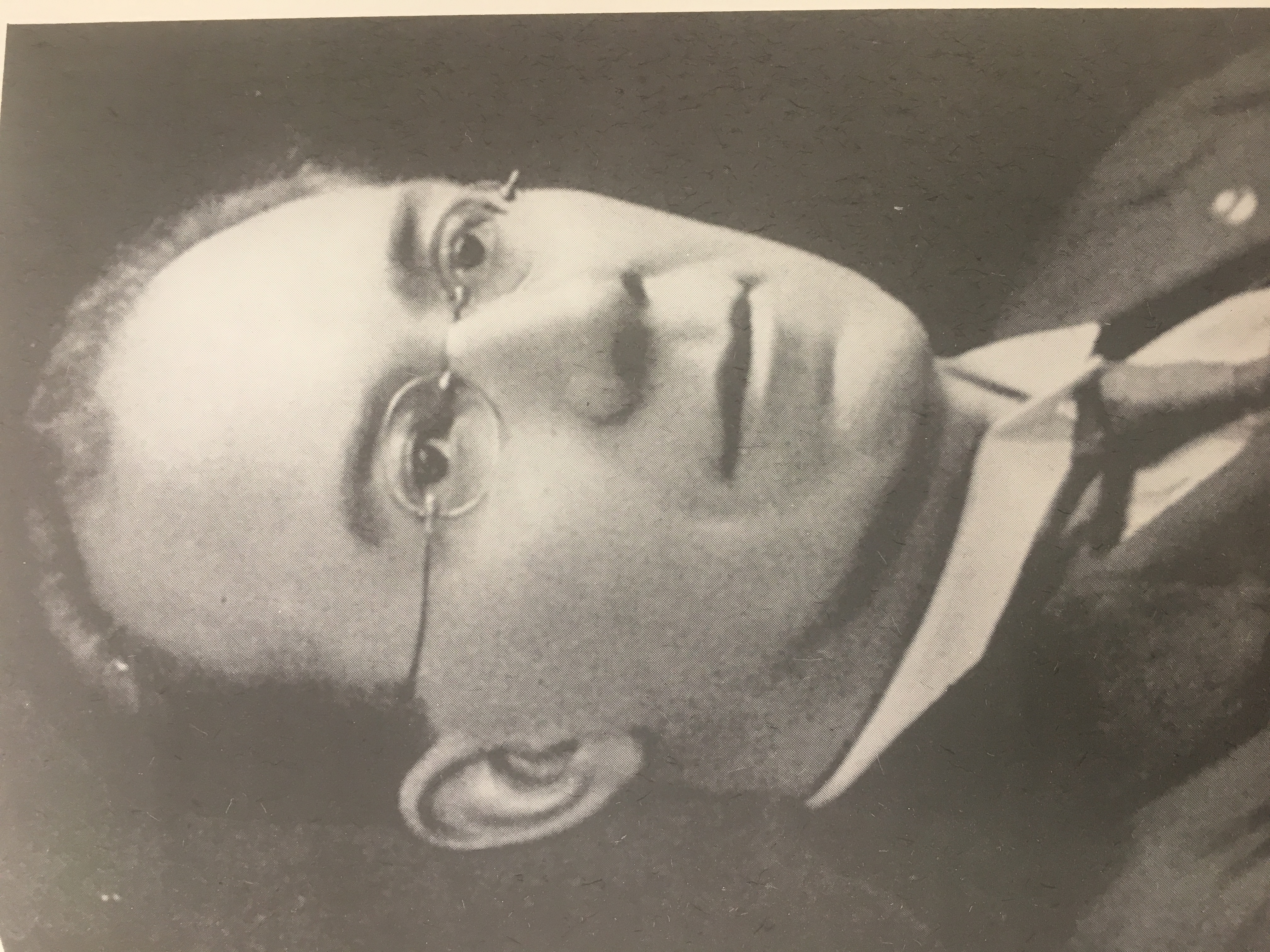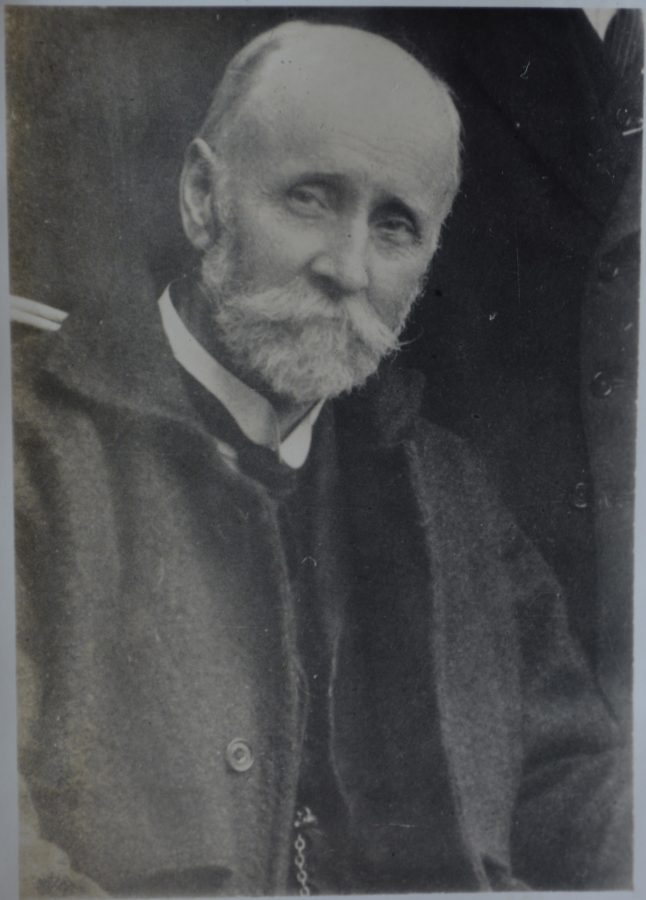
1063a. Liam De Róiste, circa 1920 (source: Cork City Library).
Kieran’s Our City, Our Town Article,
Cork Independent, 27 August 2020
Remembering 1920: Day 12, Terence’s Endurance
“No news of Terence MacSwiney beyond the fact that he has been deported. Whether they will let him die or send him to hospital, or release him, we cannot say. And what is most distressing to me about the matter is that there seems to be nothing we can do to assist him, or nothing effective in his case that will hasten, what he would desire, the independence of Ireland” (extract from Liam De Róiste’s diary, 19 August 1920, Cork Archives).
It was day eleven of Terence MacSwiney’s hunger strike when Cork Corporation and Sinn Féin member Liam de Róiste arrived in London from Cork to see Terence. At the request of colleagues in the Council of the Corporation he travelled at short notice on Saturday 21 August. Liam has been involved in Sinn Féin since 1906 and was a prominent member in the Irish Volunteer movement. He was elected a Sinn Féin MP for Cork City at the 1918 General Election. Liam’s detailed diary books survive in Cork Archives describe that he knew Terence well – as a friend and as a comrade. Liam did not agree with all aspects of Volunteer activities. He was a strategic pacifist at heart more so than a soldier.
In his diary, Liam outlines that it was six years since he had been in London – at the beginning of August 1914. He outlines that he stood outside the Bank of England and bought an evening newspaper – War had just been declared by Austria on Serbia.
On his 1920 trip Liam journeyed to Winchester prison to see some prisoners from County Cork, who are in the prison there. Unbeknownst to him, several others from Cork were at the prison before him and he ended up not seeing any of the prisoners due to restrictions.
On Tuesday 24 August 1920, Professor William Stockley, member of Cork Corporation and Sinn Féin arrived in London. He was also delegated by the Council to go to London. Since 1905 William was Professor of English at University College Cork and was President of the Cork Library Society in 1920. A learned man, earlier in March 1920 William was the subject of two failed assassination attempts by crown forces.
At 3pm, 24 August 1920, Liam and the Professor went to Brixton Prison in the London Borough of Lambeth in inner-south London to see Terence who was on Day 12 of his hunger strike.
Opened in 1820 and known initially as the House of Correction, Brixton Prison was known historically for its inhumane thread mill and over crowded conditions. By the late nineteenth century, the prison had expanded its building stock and uses – becoming an entirely female prison and then becoming a military prison and by 1920 as a trial and remand prison for London and its surrounding counties. Its inmates were famous and infamous in London’s criminal history.
Brixton Prison was the ultimate British gaol institution in the centre of London at the heart of an Empire. Deporting Terence to Brixton Prison was a strong statement by the British government to make. It was a place to “correct” prisoner’s attitudes and ultimately to break their resolve. Such an authoritarian approach is described elegantly in Liam de Roiste’s diary when he writes on 24 August 1920; “what a marvellous system of administration they have, based on prisons, police, law, rules and regulations. When they imprison you it looks as if they were conferring a favour on you instead of doing you an injury; they desire to impress on you that it is for your own good, not at all to maintain their domination over you”.
A permit for the prison visit was secured by Cork Corporation for Liam and Professor Stockley from the English Home Office. After formalities of entering their names in a book at a quasi-reception area, a deputy governor of the prison asked them to wait noting of Terence – “his Lordship had just been visited by the doctors. He may be faint after that visit”. Soon after the governor led the duo to Terence in the hospital ward.
In his diary, Liam writes of his walk to see Terence; “the prison of Brixton has not that forbidding aspect which Cork gaol has. Outside it is of the mud coloured brick which is a common colour in London. In the wing we entered the walls were enamel painted, white and green. The steel of staircases and ‘cages’ around them are polished. The bars of gates and windows look as if painted black. Everything was spotlessly clean. The hospital was itself very bright, with many windows; a table was in the centre with beds ranged around”.
Terence was the only occupant of the ward. He lay in a bed in a corner and above him was a grated window. A table was near the head of the bed, on which were some flowers, medicine bottles and some kind of invalid food. Two chairs were placed out for Liam and the Professor.
Liam expresses in his diary his first glimpse of Terence and the limited interaction Liam and Professor Stockley had with Terence; “There he lay, a strong frame broken, mind undimmed, will unshaken. I did not indeed expect to see him with such vitality…the face was drawn, but the expression of strong vitality was in it. He moved with difficulty, spoke in whispers and only with effort and in gasps. Eyes closed often and often he turned away in exhaustion. The struggle of the will and spirit with the body was plainly visible…he is dying the death he wished for – dying for Ireland. And the rulers of England – the tackers of Christianity, civilisation, liberty, justice – have hardened their hearts. They have declared the man must die. What a world it is!”.
Kieran’s new book Witness to Murder, The Inquest of Tomás MacCurtain is now available to purchase online (co-authored with John O’Mahony 2020, Irish Examiner/www.examiner.ie).
Captions:
1063a. Liam De Róiste, circa 1920 (source: Cork City Library).
1063a. Professor William F Stockley, 1920s (source: Fleischmann Diaries Archive, UCC).

1063a. Professor William F Stockley, 1920s (source: Fleischmann Diaries Archive, UCC).